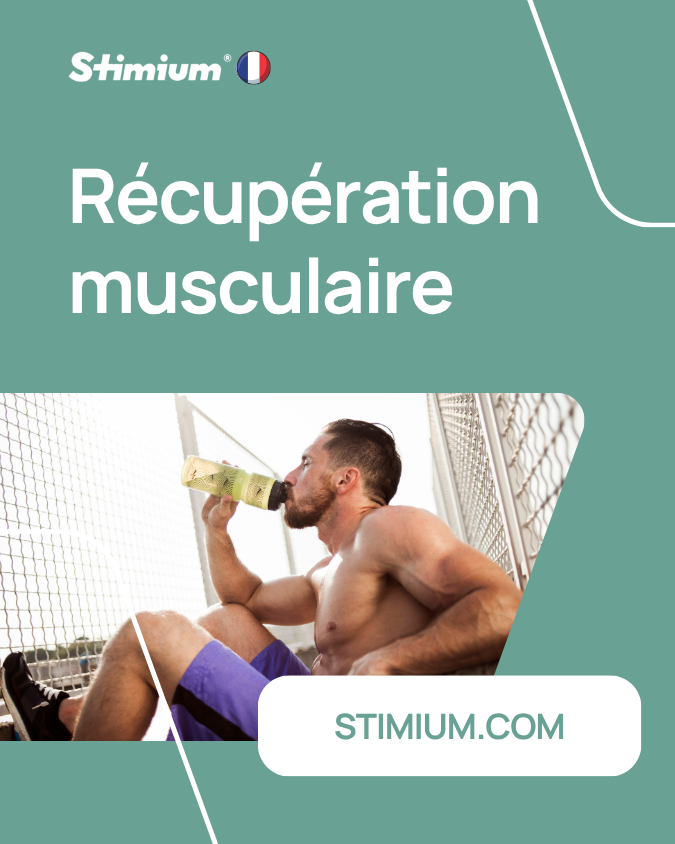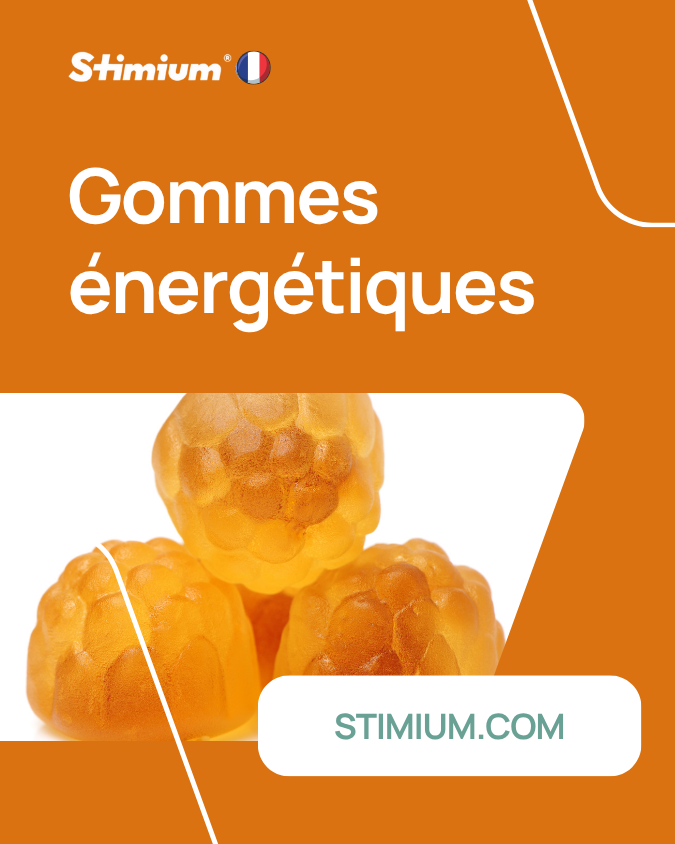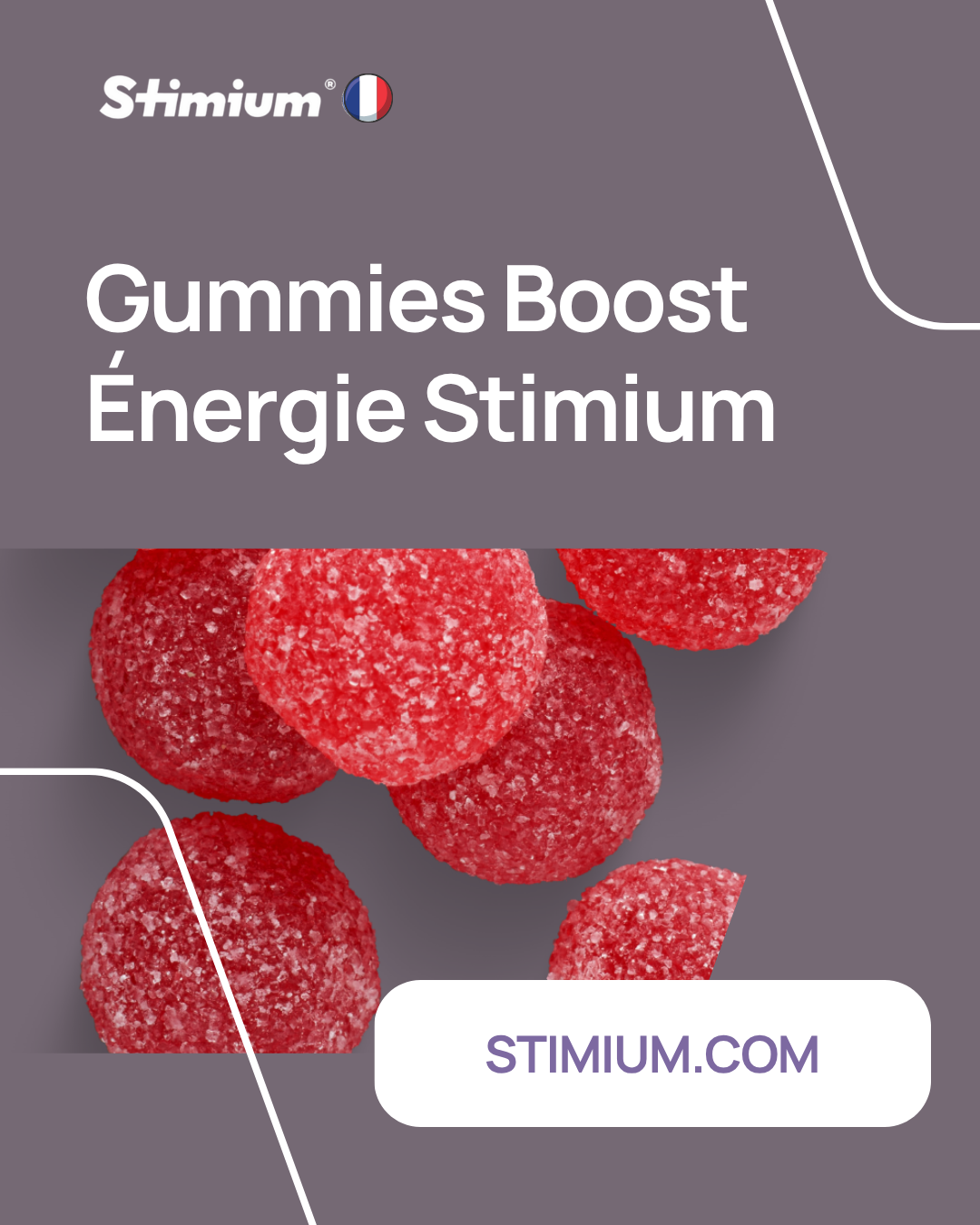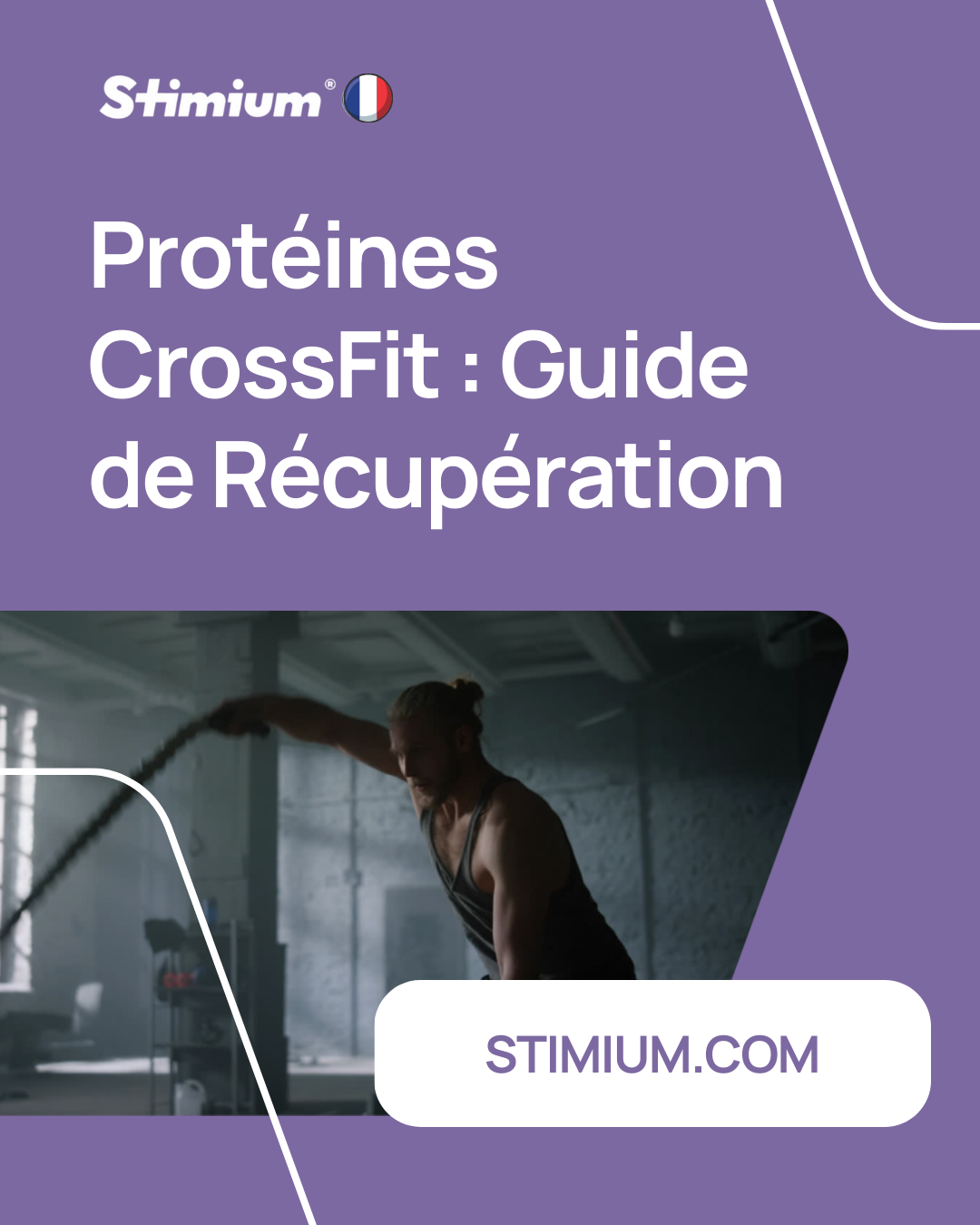Interval running: Increase your endurance
Interval training is an effective method for improving your running endurance. In the world of well-being and physical performance, interval training has become an essential practice for those looking to maximize their results in a minimum of time. This training method, which alternates periods of intense effort with active or passive recovery phases, offers notable benefits for overall physical condition.
To succeed in this process, it is imperative to take care of your body and provide it with the nutrients necessary for its proper functioning. That's where products from the Stimium range come into play, providing valuable support at every stage of your training journey.
During the preparation phase, Stimium® PreWorkOut Max becomes a first-rate companion. By taking it one hour before each session, you strengthen your ability to endure effort and prepare your body to face the challenges of interval training. Before and during your training sessions, a dose of Stimium Boost Powder ensures a complete refueling of essential nutrients, allowing you to maintain optimal energy levels.
To boost your cardiovascular performance, Stimium GABA and Stimium OMG are options to consider. Taking them regularly over a period of 30 days can help you progress and push your physical limits.
After exercise, it is crucial to promote good muscle recovery. This is where products like Stimium® Mc3 come in, reducing the risk of cramps and fatigue while promoting rapid recovery. Combined with Stimium® Rgn3 Reload or Stimium® Rgn3 Clean-Up, which replenish your body with vitamins and minerals, they constitute a winning duo for optimal recovery.
In the maintenance phase, Stimium Vital LLR offers a supplement of essential vitamins to support your overall health. If you experience muscle stiffness or tension, Stimium® Joint Flex can provide welcome relief, allowing your body to recover effectively.
In short, whether you are a professional athlete or a passionate amateur, the Stimium range accompanies you at every stage of your sporting journey. With its quality products and innovative formulas, it helps you push your limits and achieve your goals in a healthy and sustainable way.
Points to remember:
- Interval training improves your running endurance.
- This method allows you to increase your workload while limiting fatigue.
- By stimulating your heart rate, you improve your maximum aerobic speed (MAV).
- The split can be adapted to your level, whether you are a beginner or an experienced runner.
- It is important to follow a specific interval training plan to progress effectively.
The benefits of interval training
Interval training has many benefits. It allows you to improve your recovery capacity, maintain a high intensity for a long time and provide great effort. By working on your maximum aerobic speed, you improve your aerobic power, your resistance to exercise and your speed.
In addition, interval training promotes fat burning, preservation of muscle mass and improvement of cardiovascular fitness. Therefore, it is an effective choice for losing weight and improving your health.
- Improved recovery capacity
- Maintaining high intensity for a long time
- Facilitating major efforts
- Development of maximum aerobic speed
- Improved aerobic power
- Strengthening resistance to exercise
- Speed increase
- Fat burning
- Preservation of muscle mass
- Improved cardiovascular fitness
Improved recovery capacity when running
Interval training helps improve your recovery ability. By alternating periods of intense effort with periods of rest, your body learns to recover more quickly and efficiently between sets of exercises. This allows you to maintain a high intensity for a long time, which is crucial for improving your endurance.
Development of maximum aerobic speed
By working on your maximum aerobic speed (MAV) through interval exercises, you increase your ability to perform intense efforts in short periods. This results in improved aerobic power, resistance to exercise and speed. You will be able to run faster and longer during your endurance training sessions.
Burning fat and preserving muscle mass
Interval training promotes fat burning by stimulating metabolism and increasing calorie expenditure. In addition, it helps preserve muscle mass by promoting the harmonious development of all muscle groups. You will thus obtain a toned and athletic silhouette.
Improved cardiovascular fitness
By practicing interval training regularly, you improve the ability of your cardiovascular system to deliver oxygen and nutrients to the muscles. Your heart becomes more efficient and your blood circulation improves, which has a positive impact on your overall fitness.
In conclusion, interval training offers many benefits to improve your running endurance. By incorporating interval exercises into your training plan, you can increase your speed, endurance and recovery capacity. In addition, this method helps you burn fat, preserve muscle mass and improve your cardiovascular fitness. Start enjoying the benefits of interval training now and achieve your endurance goals.
Interval Training Techniques
There are several interval training techniques you can incorporate into your program. For effective split sessions, we recommend trying the following two methods:
Hill workouts:
- Alternate intensive phases at a speed higher than your VMA with recovery phases in fundamental endurance.
- Choose a hill with a length of approximately 100 to 200 meters.
- Complete several repetitions of quickly running uphill, then slowly walking or jogging back down to recover.
- Working on hills puts more strain on your leg muscles and strengthens your resistance to exercise.
Fractions of time:
- Alternate periods of high-intensity exercise with equal periods of rest.
- Choose a duration of intense exercise that suits you, based on your fitness level.
- For example, you can run at a speed close to your VMA for 30 seconds, then rest for 30 seconds.
- Repeat this sequence several times to create a split workout.
It is important to adapt these interval training techniques to your level and your goals. We recommend following a specific interval training plan, designed by a professional, to progress effectively and avoid injuries. By integrating these interval sessions into your training program, you will develop your endurance, speed and resistance to exercise.
The importance of muscle strengthening
Strengthening your muscles is essential to improving your running endurance. Not only does it strengthen muscles, but it also helps prevent injuries, increase coordination and power to run faster, and increase your VO2max by training the brain to use muscle fibers that are more resistant to fatigue.
The main muscles to work for running
To maximize your endurance performance, it is essential to work the main muscle groups used when running:
- The glutes: These muscles stabilize the pelvis and promote better propulsion.
- The calves: They are used during each stride and participate in shock absorption.
- Hamstrings: They play an important role in leg extension while running.
- Quadriceps: These muscles are responsible for knee extension and contribute to propulsion.
- Hip flexors: They allow flexion of the hip during stride.
- The core muscles: They provide stability and maintenance of posture while running.
- Abdominals: They strengthen the abdominal core and improve the efficiency of the stride.
By working these muscle groups regularly, you will improve your strength, endurance and resistance to fatigue, allowing you to run longer and more efficiently. It is recommended to supplement your interval training program with muscle strengthening exercises specific to the muscles used during running.
Improve your posture and running technique
Adopting good running posture and proper running technique is essential to improving your running endurance. Good posture allows you to run longer by saving your energy and reducing fatigue, while preventing injuries.
To improve your posture, follow these tips:
- Keep your core stable. Avoid excessive upper body movements which could make you tired more quickly.
- Lean forward slightly. This promotes better propulsion and reduces the impact on your joints.
- Keep your gaze ahead. Fix a point on the horizon to maintain a good line of vision and avoid unnecessary neck strain.
- Relax your shoulders. Avoid raising and contracting them. Leave them naturally relaxed to promote a smooth stride.
- Use your arms to support your run. When you run, move your arms in coordination with your legs to increase your efficiency and speed.
- Point the tips of your feet forward. Avoid excessive rotation of the knees and ankles which could cause stability problems.
Besides posture, controlling your breathing is also important to increase your running endurance. Breathe deeply through your nose and exhale through your mouth in a regular, controlled manner. This will allow you to oxygenate your muscles optimally and better manage your effort.
To help you visualize good posture and proper running technique, here is an image:
By adopting correct posture and improving your running technique, you will optimize your endurance performance and reduce the risk of injury. Don't forget to train regularly and pay attention to your body to progress in running.
Cross training to improve your running endurance
Cross training is an effective approach to building running endurance. By practicing another sport in addition to running, we use different muscle groups and provide rest to the muscles used during our usual training. This helps prevent overuse of the same muscles and joints, reducing the risk of running-related injuries.
This cross training also has cardiovascular benefits by improving our ability to put in sustained effort over a longer period of time. By diversifying our activities, we develop additional cardiorespiratory capacities. In addition, cross training helps increase our motivation by adding variety to our program, thus avoiding monotony and weariness.
Several sports are particularly recommended for cross-training runners:
- Cycling: This activity uses the same muscle groups as running, but with less impact on the joints. By pedaling, we strengthen our thighs, glutes and calves while improving our cardiovascular condition.
- Swimming: Swimming is a well-rounded sport that develops coordination, strengthens upper body muscles and improves lung capacity. It also offers an excellent active recovery option and promotes muscle relaxation.
- Walking: Walking offers a gentle alternative to running, allowing us to maintain our endurance without undue stress on the joints. It can be done at various intensities and is an excellent recovery activity.
- Crossfit: Crossfit combines strength, cardio and flexibility exercises, making it a comprehensive option for strengthening all muscle groups and improving both strength and endurance.
Incorporating cross-training into our running program allows us to diversify our efforts, improve our overall endurance and prevent injuries. By judiciously combining these complementary activities with our running training, we maximize our performance and achieve our endurance goals.
The importance of knowing your VO2max
VO2max is an essential indicator of running performance. It corresponds to the maximum consumption of oxygen that our body can process during intense physical effort. A high VO2max means you can deliver more oxygen to your muscles, which significantly improves your endurance.
To know your VO2max, you have two options. The first consists of carrying out an exercise test in a specialized clinic. This allows you to obtain a precise and personalized measurement of your VO2max. The second option is to use a rough formula based on your VMA, or maximum aerobic speed. VMA is the rate at which you consume maximum oxygen.
Increasing your VO2max is essential to improving your running endurance. The higher your VO2max, the more you will be able to maintain sustained effort and endure longer distances without excessive fatigue. So, by knowing your VMA and gradually increasing your VO2max through targeted training, you will be able to run faster and longer.
The advantages of knowing your VO2max
- Allows you to evaluate and measure your physical condition
- Gives valuable insight into your endurance level
- Helps define appropriate training intensity zones
- Allows you to track your progress over time
- Gives you a clear goal to achieve and exceed
In conclusion, knowing your VO2max is essential to improving your running endurance. This gives you valuable insight into your fitness level and allows you to plan an effective workout. By gradually increasing your VO2max through a specific training program, you will be able to improve your performance and achieve your goals in terms of speed and endurance.
Conclusion
Interval training is an effective method for improving your running endurance. By incorporating interval training sessions into your program, you can progress in terms of speed, distance and resistance to effort. By alternating periods of intense exercise with periods of recovery, you boost your heart rate and develop your ability to maintain high intensity for a longer duration.
By combining interval training with muscle strengthening, good posture and proper running technique, you will optimize your endurance performance. Strengthening your muscles allows you to prevent injuries, increase your power and use muscle fibers resistant to fatigue. Good posture and running technique help you save energy and run longer without getting tired.
It is important to follow a training plan adapted to your level and to listen to your body to avoid injuries. By following these precautions and putting these tips into practice, you will increase your running endurance. Continue to train regularly and you will achieve your endurance improvement goals.







